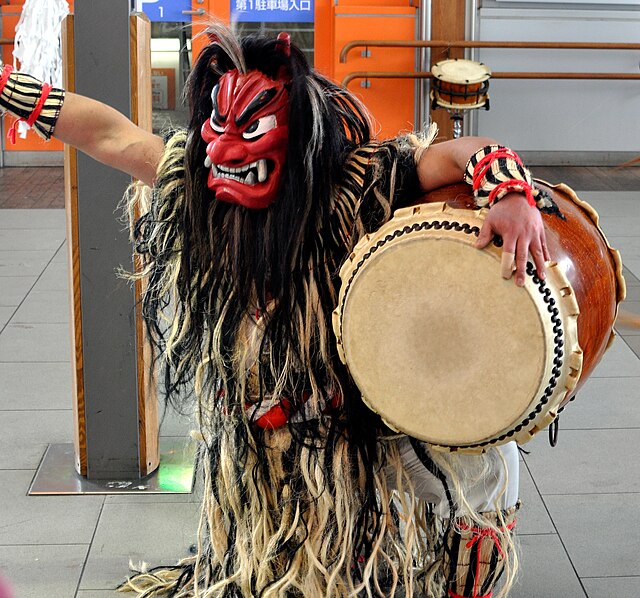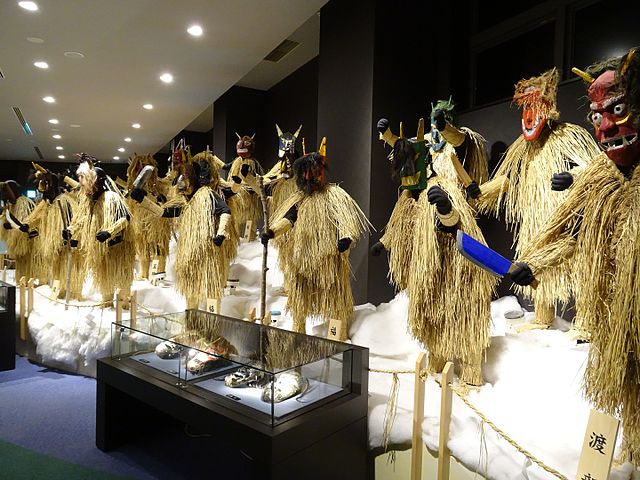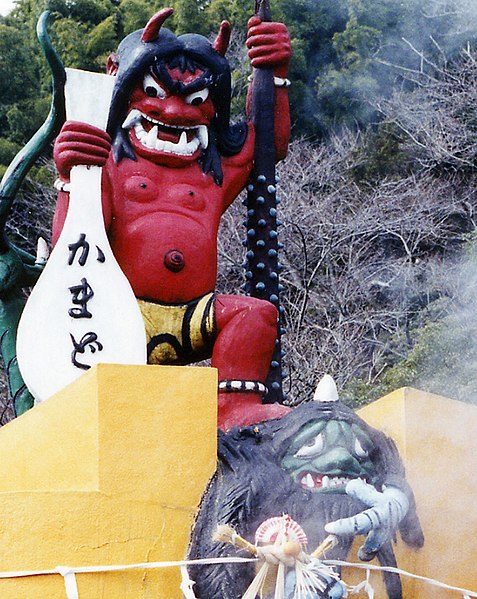The Namahage are demonlike beings portrayed by men wearing hefty oni (ogre) masks and traditional straw capes (mino) during a New Year's ritual, in local northern Japanese folklore of the Oga Peninsula area of Akita Prefecture.
A dancing drummer wearing a Namahage costume, performed Namahage-Daiko in Akita Station.
Namahage costumes
Namahage-kan or Namahage Museum, Oga, Akita
Namahage Museum
An oni is a kind of yōkai, demon, orc, ogre, or troll in Japanese folklore. They are believed to live in caves or deep in the mountains. Oni are known for their superhuman strength and have been associated with powers like thunder and lightning, along with their evil nature manifesting in their propensity for murder and cannibalism. They are typically portrayed as hulking figures with one or more horns growing out of their heads, massive teeth, and occasionally a third eye in the center of the forehead. They are typically depicted with red, blue, black, or yellow colored skin, wearing loincloths of tiger pelt, and carrying iron kanabō clubs. They also have three to six digits on each hand and foot tipped with claw-like nails. Oni are able to change their looks to fool their victims into trusting them. Oni can be male or female, but have been predominantly male throughout history. Female oni are sometimes referred to by the name Yamauba. When in disguise, oni are capable of appearing as a man or woman, regardless of their gender. As monstrous as oni are, they have been linked to bringing good fortune and wealth.

An oni menaces the monk Kūkai, who wards it off by chanting the Buddhist tantras. Painting by Hokusai (1760–1849).
Oni being captured by Shōki, the Demon Queller. 19th Century netsuke. Museum of Far Eastern Antiquities, Stockholm.
Oni, as illustrated in Konjaku Gazu Zoku Hyakki by Toriyama Sekien.
This oni (ogre) tramples a hapless villain in Beppu, Oita, Oita Prefecture, a famous onsen hot springs resort on the island of Kyushu in Japan.








